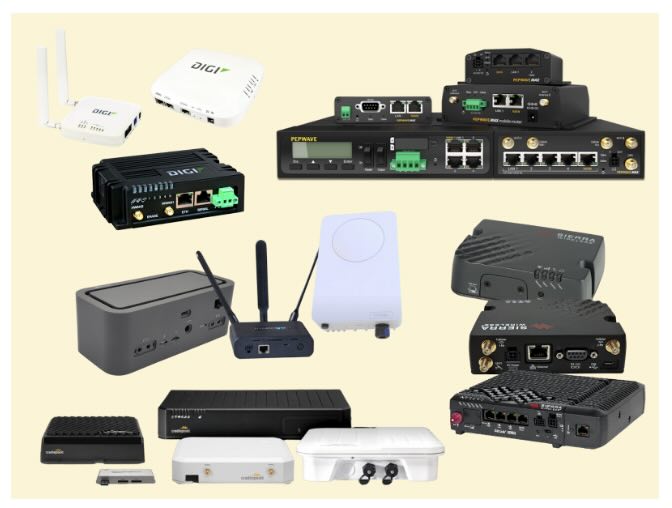



You may have heard the term “Cat” before when it comes to Ethernet cables (e.g. Cat 5, Cat 6), but what about when someone is talking about cellular? “Cat” refers to the category of a 4G LTE modem (5G does NOT use categories). 4G LTE (Long Term Evolution) is a cellular technology in which both voice and data service can operate.
Categories are used to define the performance specs of the LTE device. They range from 1 to 22 and differ with regards to the frequency band support as well as the upload and download speeds they are capable of running. For example, Cat 1 modems can download at up to 10 Mbps (megabits), while Cat 22 modems are going to receive download speeds of up to 4 Gbps (gigabits).
These are the first modems that support LTE Advanced technology. This means they are capable of carrier aggregation - the modem can connect to multiple frequency bands simultaneously. They are also generally capable of being used worldwide because of their frequency band support. This makes them popular for users who want to be able to work from the road. Like lower category modems 3 and 4, Cat 6 is also a common choice for home and small business use.
|
LTE Category |
Max Download Speed |
Max Upload Speed |
|
10 Mbps |
5 Mbps |
|
|
100 Mbps |
50 Mbps |
|
|
150 Mbps |
50 Mbps |
|
|
Cat 6 |
300 Mbps |
50 Mbps |
|
300 Mbps |
100 Mbps |
|
|
600 Mbps |
75 Mbps |
|
|
600 Mbps |
100 Mbps |
|
|
800 Mbps |
226 Mbps |
|
|
1200 Mbps |
300 Mbps |
|
|
1600 Mbps |
300 Mbps |
|
|
2000 Mbps |
300 Mbps |
|
|
4000 Mbps |
450 Mbps |
cat6 router, lte cat 6, 4g lte cat6
4G LTE (Long Term Evolution) is a significant advancement in mobile communication technology, providing high-speed internet access for various devices. Unlike its predecessor, 3G, which offered slower data transfer rates, 4G LTE can deliver download speeds of up to 1 Gbps, enabling seamless streaming, gaming, and browsing experiences.
This technology operates on a different architecture, utilizing packet-switching rather than circuit-switching, which enhances efficiency and reduces latency. 4G LTE is divided into several categories, each designated by "Cat" numbers, indicating the maximum speeds and capabilities of the devices that support them, such as Cat 1 through Cat 22.
5G technology represents the next generation of mobile networks, promising faster speeds, lower latency, and greater capacity than 4G LTE. With download speeds potentially exceeding 10 Gbps, 5G is poised to revolutionize industries by enabling advanced applications like IoT, autonomous vehicles, and smart cities.
The deployment of 5G involves a variety of frequency bands, including low, mid, and high bands, each offering different advantages. Low-band 5G provides extensive coverage and penetration, while high-band (mmWave) 5G offers ultra-fast speeds over shorter distances. Understanding these bands is crucial for selecting the right equipment to leverage 5G capabilities.
Selecting the appropriate 4G or 5G router is essential for optimizing connectivity and performance for both home and business applications. Factors to consider include speed requirements, the number of connected devices, and the specific use case, such as streaming, gaming, or remote work.
When comparing routers, it's important to look at features like dual-band support, antenna configurations, and compatibility with various cellular bands. Brands like CradlePoint, Peplink, and Sierra Wireless offer a range of options tailored to different connectivity needs, making it easier for users to find the right solution.
Cellular signal boosters enhance mobile signal strength in areas with weak reception, ensuring reliable communication and internet access. These devices are particularly beneficial in rural areas, large buildings, or locations with significant physical obstructions that impede signal quality.
By amplifying existing cellular signals, boosters can improve voice call clarity, data speeds, and overall connectivity. They are available for various environments, including vehicles and homes, and can support multiple users simultaneously, making them a valuable investment for those reliant on mobile technology.
